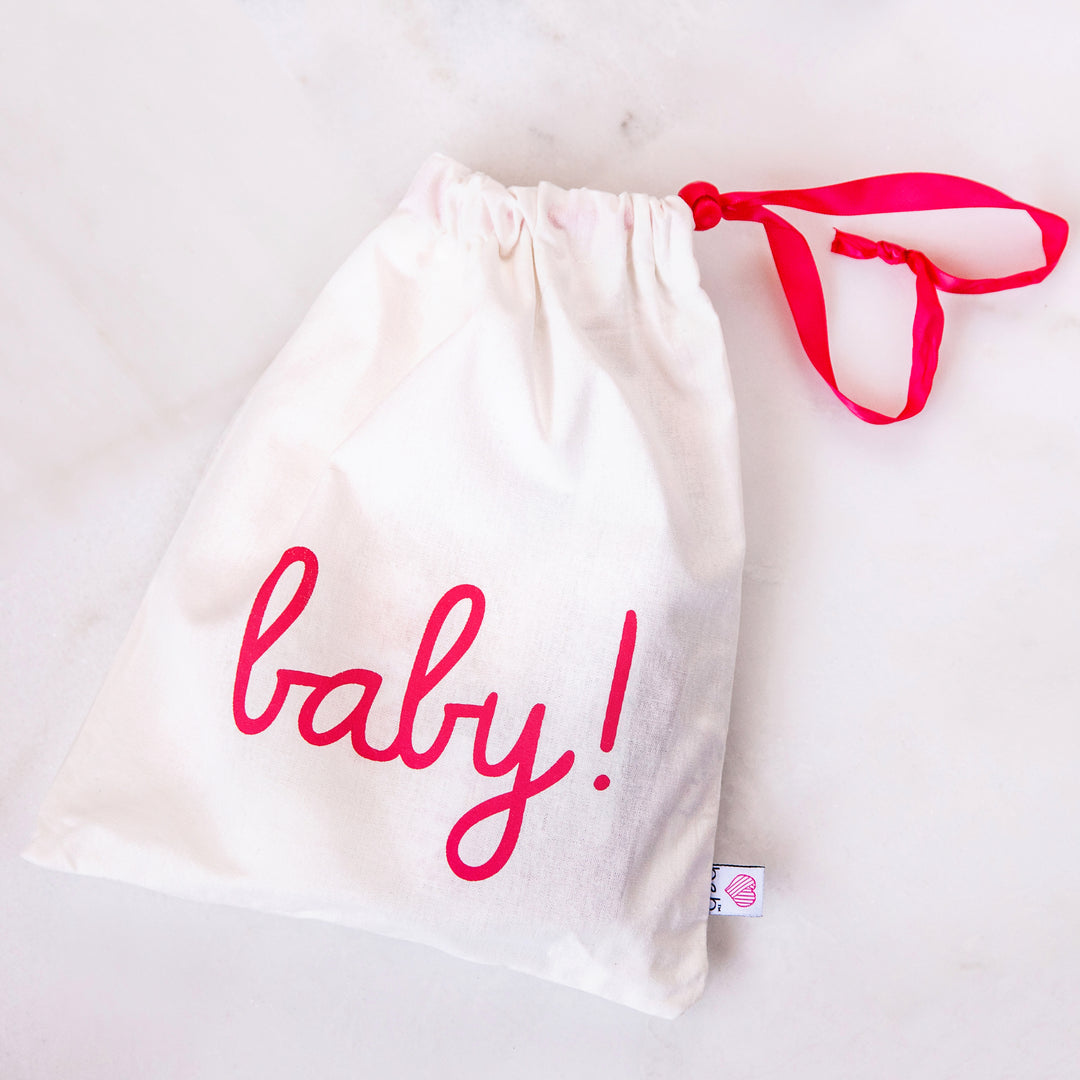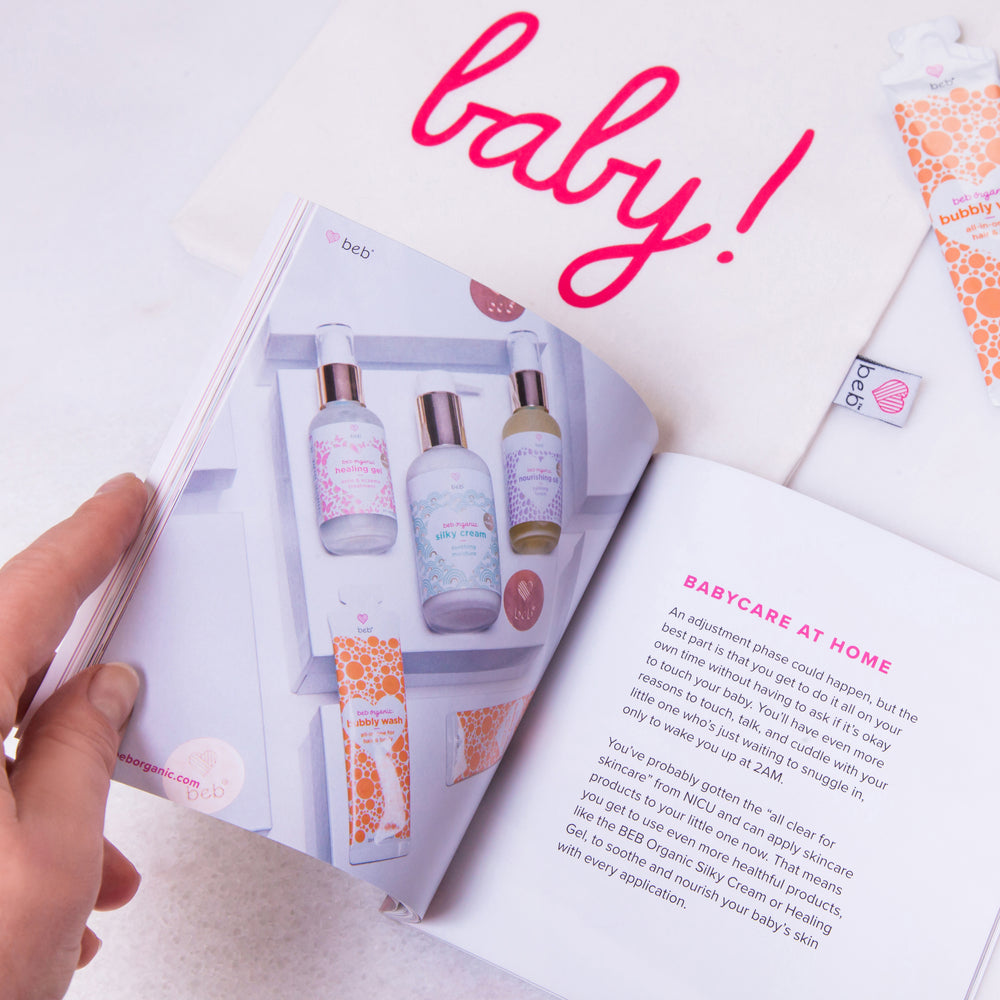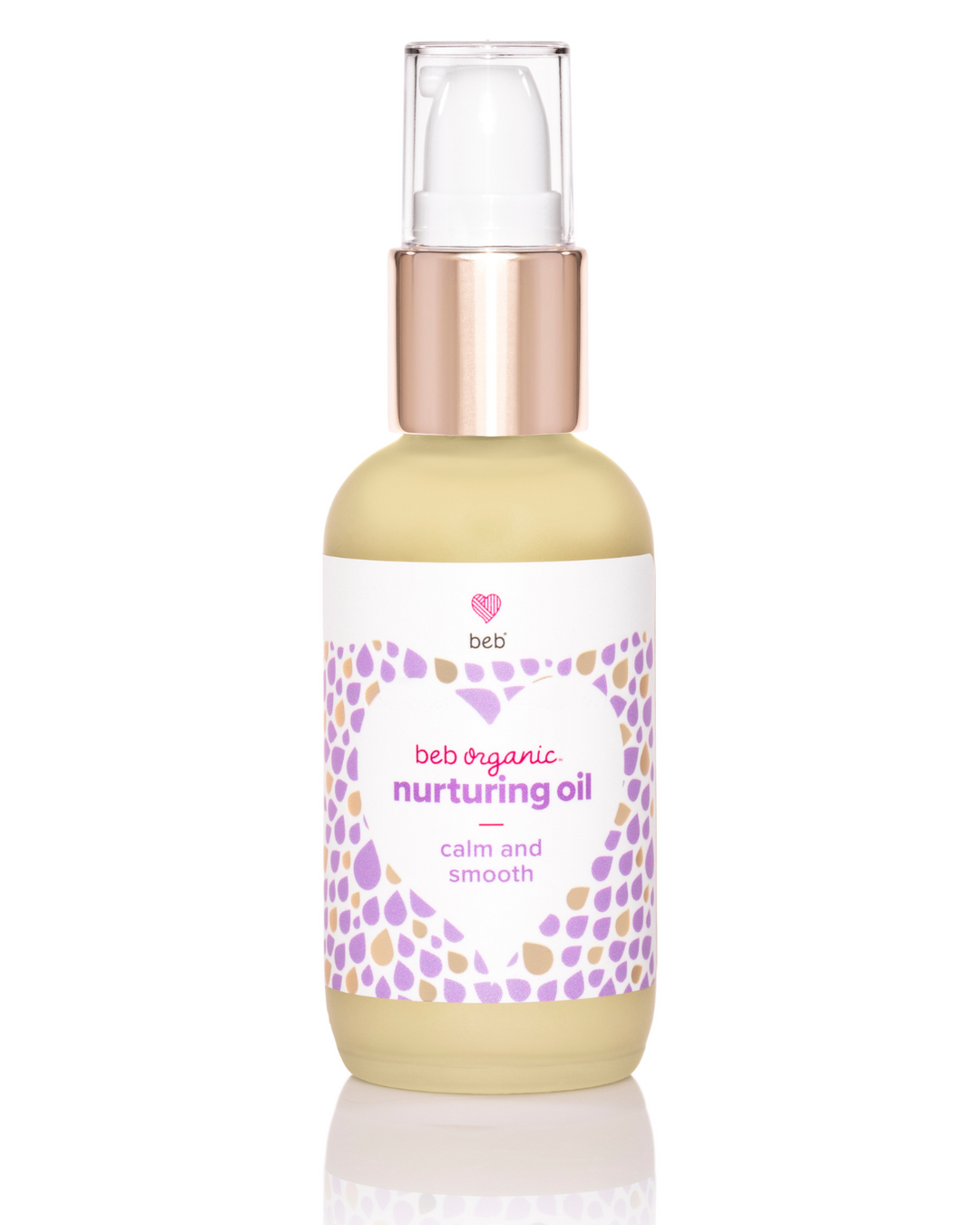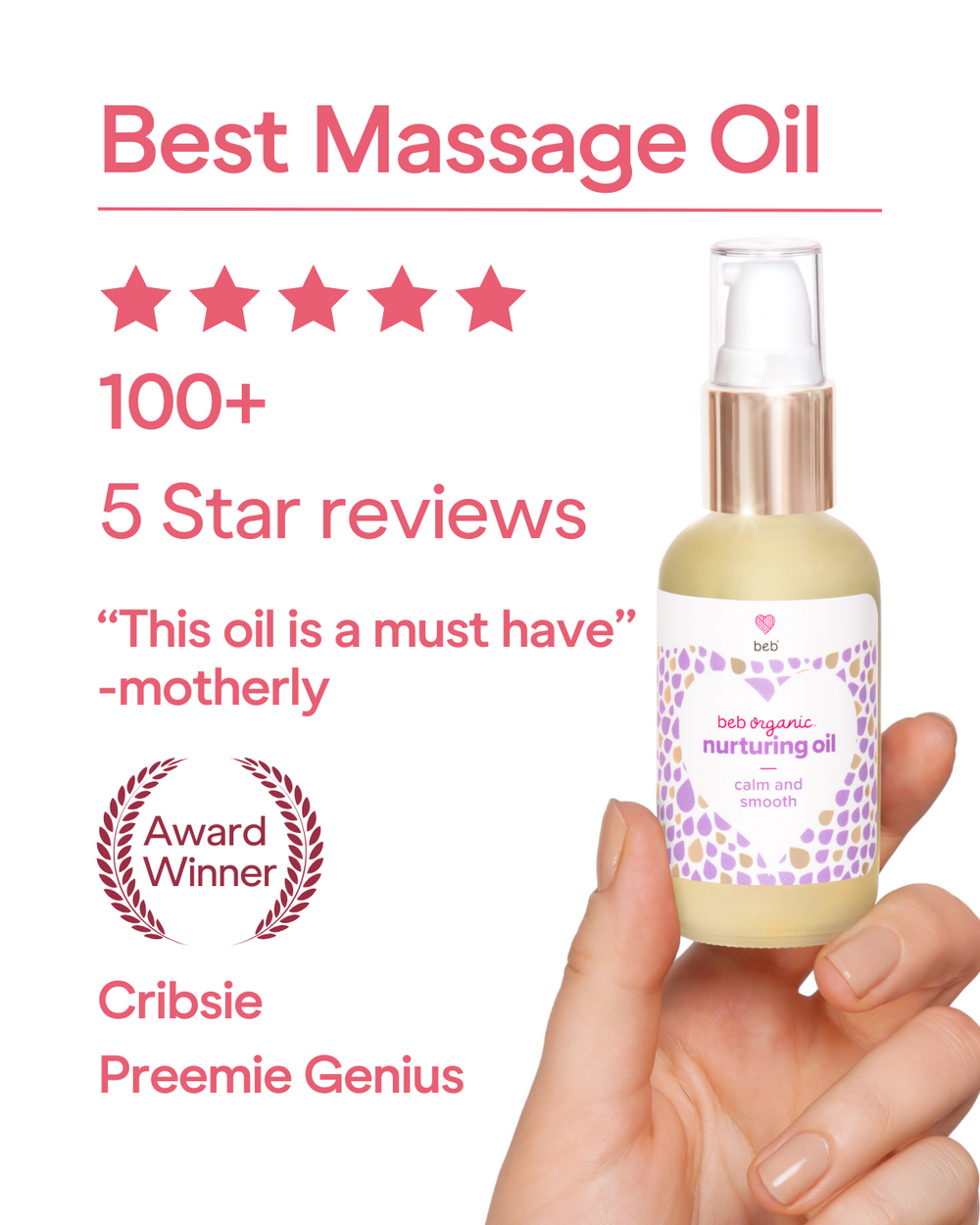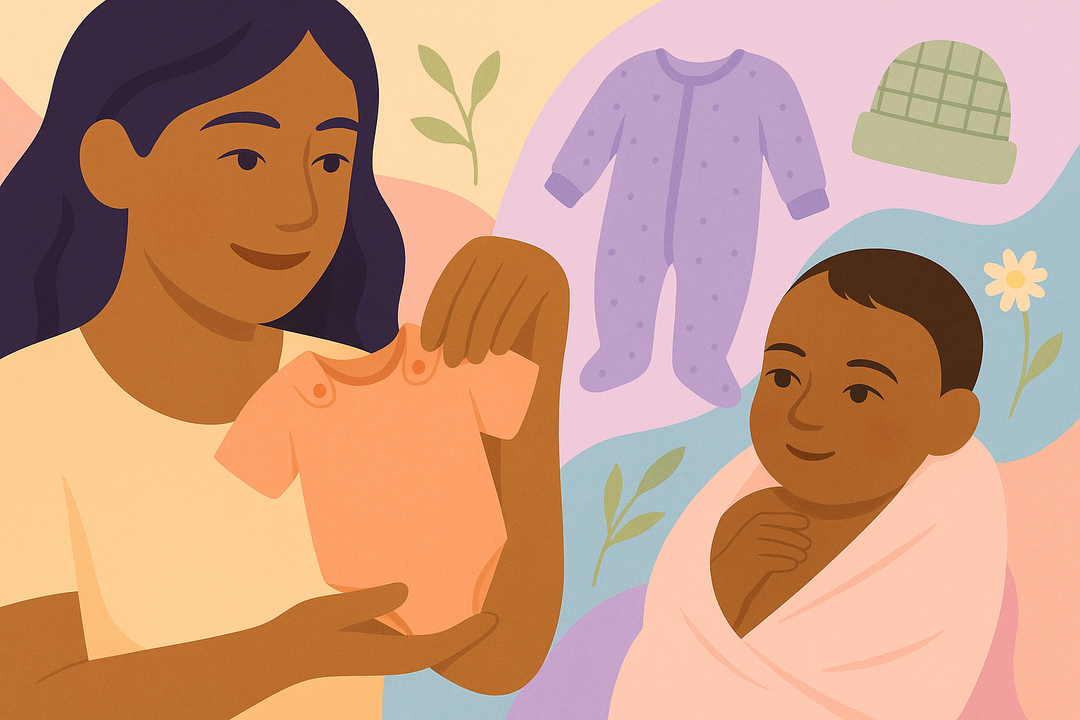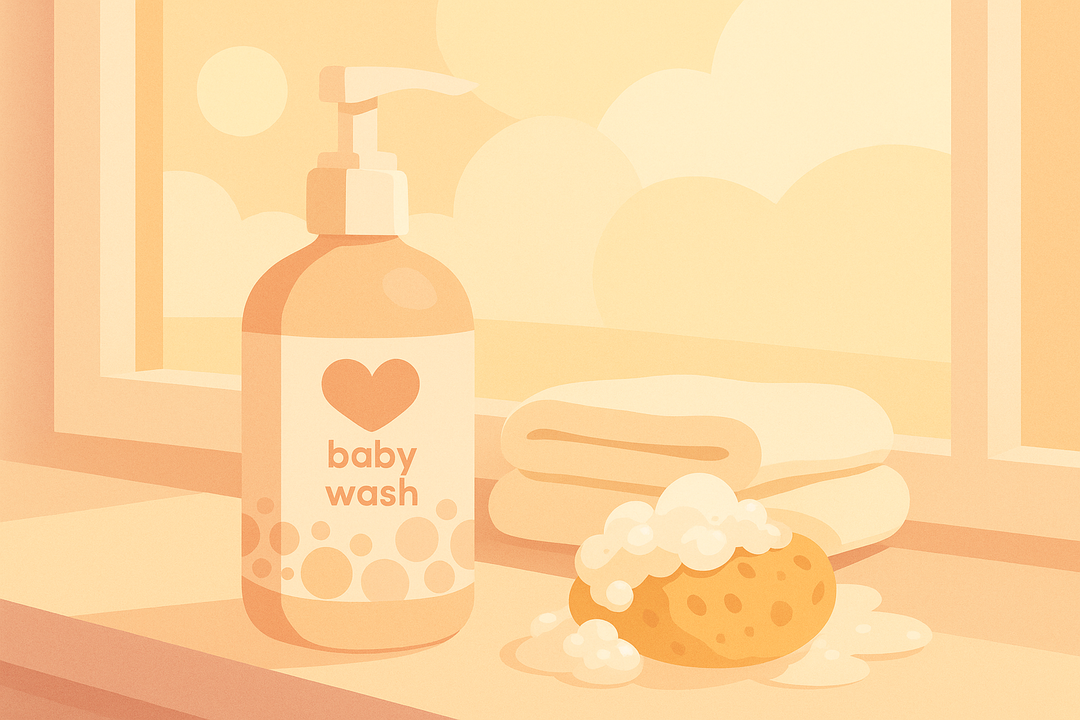Diaper Rash Dilemma
Of course, the best cure for diaper rash is to prevent it from happening in the first place, but that's not always possible.
For preemies and newborns with challenging health issues, preventing diaper rash is even more important, and can be even more challenging. BEB Organic Diaper Balm is chosen by top-tier NICUs because it is so safe and effective while also luxuriously protective.
By keeping your baby’s skin hydrated and maintaining the right balance of healthy cells and healthy bacteria, rashes can often be prevented as you help your baby’s immune function work at maximum efficiency.

Causes of Diaper Rash
Diaper rash isn’t just painful to look at, it often causes your little one some degree of discomfort. Characterized by redness—and in severe cases, bumps and open sores—diaper rash should be treated as soon as possible so it doesn’t get worse.
Preemies who are born extremely early have such under-developed skin it isn’t yet a protective barrier, making them very susceptible to infection. Skin is your baby’s first line of defense—when your preemie’s skin is afflicted with rash of any kind, it struggles to protect her health and wellbeing.
Nearly all babies will experience some type of diaper rash in their first year of life. When skin gets wet and stays wet, it can cause the breakdown of healthy bacteria. Add in the high acidity from urine and bowel movements, and you have the perfect recipe for a reaction.
Yeast infections love damp, bacteria-filled places like the chubby folds on baby legs where a wet diaper sits.
Anything your baby’s body doesn’t react well to can upset both their external and internal pH balance.
Antibiotics can affect the pH balance of the skin and within the body. But when mom (or baby) has been put on antibiotics—especially right after birth—the chance of diaper rash increases. Introducing new foods is another common culprit for diaper rash because baby may have an allergic reaction to them that shows up as diaper rash.
Often, the best risk reduction for diaper rash is prevention. Changing diapers frequently—at least every two hours and after every bowel movement—is the easiest ways to prevent your baby’s skin from becoming too wet. Using an oil-based protective balm with at least 20% zinc oxide, like BEB Organic Diaper Balm, on the diaper area can form a protective barrier on baby’s skin that helps prevent diaper rash before it starts.

Get the Red Out
To cure diaper rash quickly, you have to treat it gently.
Always pat the irritated area dry, never rub. If you are breastfeeding, breast milk—especially the foremilk— has very high levels of antibodies that could play a significant role in clearing up diaper rash. Try applying colostrum-rich breast milk directly on baby’s skin after a bath, let it dry, then follow with BEB Organic Diaper Balm. With zinc levels at 22%, it is very protective.
For a very stubborn rash, introducing extra probiotics can be a natural part of the cure. Mix a capsule of probiotic (use a refrigerated, high-quality kind available from a natural food store if possible) into a soothing gel like our BEB Organic Soothing Serum (fortified with probiotics) and apply to the rash to help soothe and comfort irritated skin. Let it dry, then follow with a thick coat of BEB Organic Diaper Balm.
Probiotics require a water-based product to be effective, but the pH of water is higher than that of skin. You'll want to immediately apply a thick coat of our zinc-based Diaper Balm to take any sting (from the water) away. Do this as frequently as possible—at least every two hours, or as often as you change your baby.
For an extra gentle touch, spray water onto your baby’s skin instead of wiping it. Applying natural products will help neutralize the naturally high pH of water, and keep the skin closer to its ideal 5.5 pH.
Tip:
Consider getting a de-chlorinator for your home’s water supply, as chlorine can be very drying and damaging to skin.

The Best Defense is a Good Offense
When managing diaper rash, the trick is to get the skin back in balance. This strengthens the skin’s natural defenses so it can fend off the acidic pH of urine and the microbe exposure from feces.
The best cure for diaper rash comes from leveraging healthy ingredients and formulas enriched with oils high in essential fatty acids, zinc minerals, healthy triglycerides, antioxidants, and probiotics. To cover most of your baby’s skincare needs in the healthiest of ways, pick up the BEB Organic We’ve Got This Set.

Our recommendation is to avoid lanolin, mineral oil, and petroleum-based products. Petroleum byproducts only create a barrier between skin and urine or feces but don’t help heal and repair skin beyond that. Though lanolin is made from sheep’s wool, it usually has pesticide residue in it.
We suggest a three-step process:
- Give your little one a quick soak in Bubbly Wash or sponge cleanse for just a minute. Don’t rub, just let the bubbles do the gentle work of cleansing.
- Pat dry and treat with Soothing Serum (formerly named Healing Gel) if necessary.
- Block out bacteria with our zinc-based Diaper Balm.

Birthday Suits and Other Attire
Giving your baby’s rashy bottom some naked time can also help dry up the affected area. That's not always and option in the NICU, but ask your nurses what they think. The best time for naked time is often right after a bowel movement.
If you are using disposable diapers, chlorine-free ones can help prevent irritation if you have that option. Many mainstream diapers use harsh chemicals to create "deodorizing" fragrances that can cause allergic reactions.
As always, if you are uncomfortable with what you see on your baby, visit your doctor or talk with your nurses right away. The advice in this article does not replace medical advice.
If our suggested methods for curing diaper rash don’t bring results in under seven days, we recommend you seek medical attention immediately.
Sources
- Shu M, Wang Y, Yu J, Kuo S, Coda A, Jiang Y, Gallo RL, Huang CM. Fermentation of Propionibacterium acnes, a commensal bacterium in the human skin microbiome, as skin probiotics against methicillin-resistant Staphylococcus aureus. PLoS One. 2013;8(2):e55380.
- J AOAC Int. 2010 Mar-Apr;93(2):712-9.
- Pérez A, González G, González J, Heinzen H. Multiresidue determination of pesticides in lanolin using matrix solid-phase dispersion. J AOAC Int. 2010 Mar-Apr;93(2):712-9.
- Gac Sanit. 2013 Mar 25. pii: S0213-9111(13)00043-5. doi: 10.1016/j.gaceta.2013.02.002. [Epub ahead of print] [Chlorine concentrations in the air of indoor swimming pools and their effects on swimming pool workers.] [Article in Spanish] Fernández-Luna A, Burillo P, Felipe JL, Gallardo L, Tamaral FM.


